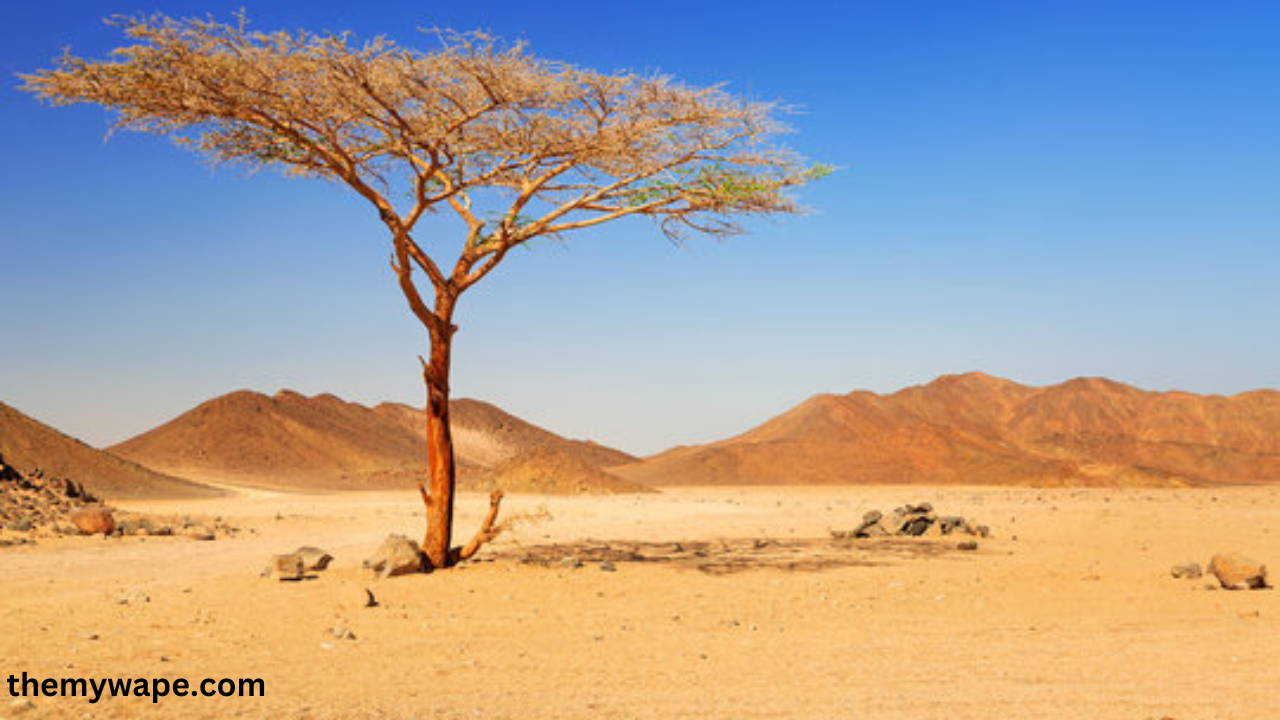Introduction to Desert Trees
Desert trees are a testament to nature’s ability to adapt and thrive in the harshest conditions. These remarkable species have evolved to withstand extreme temperatures, arid conditions, and limited water availability, making them vital components of desert ecosystems. In this article, we’ll explore the unique characteristics of desert trees, their ecological roles, and their significance to both nature and humans.
Characteristics of Desert Trees
Desert trees are not your typical trees. They possess a range of adaptations that allow them to survive in some of the most challenging environments on Earth. One of the most significant characteristics is their ability to conserve water. Unlike trees in more temperate climates, desert trees have evolved to minimize water loss through various strategies, such as deep root systems that tap into underground water sources and leaves that reduce evaporation.
Common Types of Desert Trees
The Mesquite Tree
The mesquite tree represents the enduring strength of the desert. Known for its ability to thrive in poor soil, the mesquite is a true survivor.
Adaptability and Uses
This tree is not only tough but also highly useful. Its wood is used for furniture, while its beans are a source of food for both animals and humans.
The Joshua Tree
The Joshua Tree is an iconic species of the Mojave Desert, often associated with the stark beauty of the American Southwest.
Cultural and ecological importance
Beyond its striking appearance, the Joshua Tree plays a crucial role in its ecosystem, providing habitat for various species and holding cultural significance for Indigenous peoples.
The Palo Verde Tree
The Palo Verde, with its green bark, is one of the most distinctive desert trees.
Unique Features and Habitat
This tree is adapted to thrive in extreme heat, and its ability to photosynthesize through its bark is a fascinating survival strategy.
The Acacia Tree
Acacia trees are common in many deserts around the world, known for their ability to survive in incredibly dry conditions.
Survival Techniques
Acacias have developed thorny defenses and symbiotic relationships with ants, which help protect them from herbivores.
Ecological Role of Desert Trees
Desert trees are more than just survivors; they are key players in their ecosystems. They help stabilize the soil, preventing erosion in these fragile environments. Additionally, their presence creates microhabitats that offer shade and shelter to a variety of organisms, from insects to larger mammals.
Desert Trees and Biodiversity
The variety of life that desert trees sustain is remarkable, especially given the extreme conditions they endure. These trees provide food, shelter, and breeding grounds for numerous species. Birds, insects, and mammals all rely on desert trees, creating a complex web of life that sustains the desert ecosystem.
Water Management in Desert Trees
Water is a scarce resource in deserts, and desert trees have evolved remarkable ways to manage this precious commodity. Numerous desert trees possess extensive root systems that extend deep into the ground to access underground water sources.
Others can store water in their trunks or leaves, allowing them to survive long periods of drought.
Human Use of Desert Trees
Desert trees have long been valuable to humans. Indigenous cultures have used them for centuries, relying on them for food, medicine, and materials. The wood from desert trees is often hard and durable, making it ideal for tools and construction.
Threats to Desert Trees
Despite their resilience, desert trees face significant threats. Climate change is altering the environments in which these trees thrive, leading to changes in their distribution and health. Human activities, such as deforestation and land development, also pose serious risks to these vital species.
Conservation Efforts
Conservation efforts are crucial to protecting desert trees. Reforestation projects and the promotion of sustainable land-use practices are helping to preserve these important species. In some regions, there are initiatives to reintroduce native desert trees to areas where they have been lost.
The Future of Desert Trees
The future of desert trees is uncertain, but they may play a critical role in the fight against climate change. Their ability to sequester carbon, stabilize soil, and support biodiversity makes them valuable allies in global conservation efforts.
Myths and Misconceptions About Desert Trees
There are several myths about desert trees, such as the idea that they require no water at all. In reality, desert trees do need water; they are just incredibly efficient at using it.
Conclusion
Desert trees are fascinating examples of nature’s resilience and adaptability. They play vital roles in their ecosystems, supporting biodiversity, stabilizing soil, and providing resources for both wildlife and humans. As we face the challenges of climate change, it is more important than ever to protect and conserve these remarkable trees.
FAQs
What is the most common desert tree? The mesquite tree is one of the most common desert trees, especially in the Southwest United States.
How do desert trees survive without much water? Desert trees have adapted to conserve water through deep root systems, water storage in their trunks, and reducing water loss through their leaves.
Are desert trees endangered? Some desert tree species are at risk due to climate change and human activities, but conservation efforts are underway to protect them.
Can desert trees be grown in non-desert areas? Yes, some desert trees can be grown in non-desert areas, provided the conditions are suitable, such as well-drained soil and plenty of sunlight.
What role do desert trees play in local cultures? Desert trees have significant cultural importance, providing materials, food, and medicinal resources for Indigenous peoples for thousands of years.
You can see the latest updates on : MyWape



